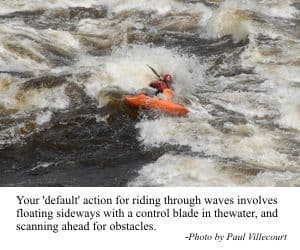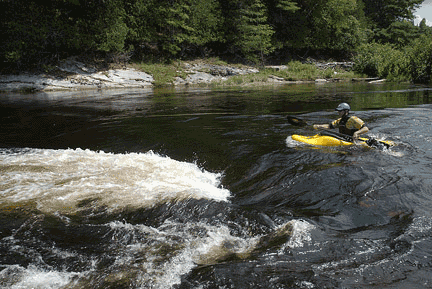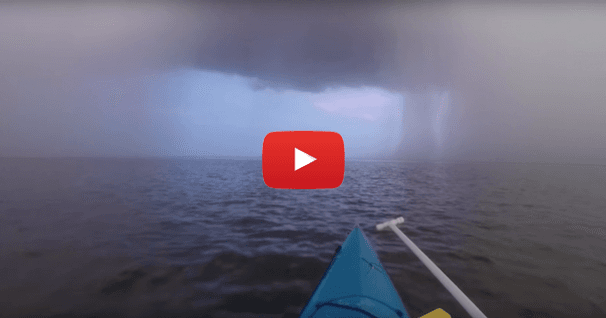Riding through wave trains
The following is a modified excerpt from Ken Whiting's book, 'The Ultimate Guide to Whitewater Kayaking'
When learning to whitewater kayak, it's often taught that while running through a rapid your best course of action is to just keep on paddling. The reason is simple. Every paddle stroke that you take effectively acts as a brace. This is important in the early stages because you don't have enough experience to anticipate how the river will push you around. As you gain experience and confidence, you gain the capacity to foresee the effects that waves and currents will have on your boat. As this happens, your approach to running rapids should change. Continuous downstream paddling should no longer be your "default" action. Instead, your default action should be floating downstream sideways with your eyes scanning ahead for obstacles.

There are a number of reasons for this change in approach. Firstly, a river's current is usually carrying you downstream at a horse's pace without any forward paddling. Unless you're in a hurry or need to build forward speed to clear an obstacle, then there's no real use in speeding up your descent. Secondly, if you do see an obstacle or a danger ahead, paddling forward is just taking you there more quickly! It also means that you have to turn your kayak almost a full 180 degrees to establish an effective ferry angle, whereas if you're floating sideways, just a small sweep stroke will move you onto a powerful ferry angle in either direction. Another benefit of the change in tactics is that you'll now be moving the same speed as the main current. This means that catching waves to surf or to help your ferry will be much easier.
The key to floating sideways through waves is staying loose at the hips, so that your kayak can follow the contours of the river while your body stays balanced over top.
If the waves start breaking, you need to get a bit more aggressive to pull yourself through it. There are a couple of different ways to deal with breaking waves. You can "jump" the wave, or you can pull yourself through. The method that you choose will depend on your personal preference, as well as on your need to set up for future moves. Jumping a wave involves using a small pivot turn to pull your bow up on top of the break so that you skip over it. It's preferable to have some speed when doing this to prevent your stern from catching and sending you into a vertical stern squirt.
Here are pictures in movie form to help you see what is being explained:

It's also preferable to approach the wave on an angle in such a way that when it's time to pull your bow up, that sweep stroke pulls your kayak to face directly downstream. A potential drawback from using this technique is that you are usually carried very quickly into the following waves, making any quick moves difficult to make.
Pulling through a wave is a slower, but often more controlled, means of getting through a breaking wave. The idea is to float into the wave on an angle, ready with a powerful stroke on the downstream side that will pull you through the break. In this case, you actually use the breaking part of the wave to slow yourself down. You can then come through with more control and more time to prepare yourself for the next move. Float into the wave with a downstream angle and with your boat tilted downstream. In this way, you prevent water from piling up on your stern and squirting you up when you hit the break. This also lets you pre-establish which stroke you'll be using to pull yourself through the wave.
Ken is a World Champion Kayaker and the author and producer of an award winning series of instructional kayaking books and videos. He was recognized by "Paddler Magazine" as one of their 'Paddlers of the Century'. For more information, visit www.helipress.com.
Related Articles
Even if you do your research and check the weather before heading out, sooner or later every kayak…
In October 2017, four friends and I paddled 150 miles down the upper Missouri River from Fort…
"Snow Melts to White Water" has always been our motto - being skiers and avid river paddlers - we love…
River Bends Whenever possible, stay on the inside of bends. Rivers run fastest and deepest at the…



